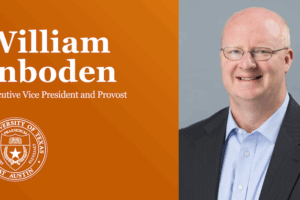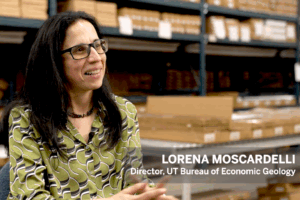As all eyes turn to Beijing in anticipation of the 2008 Olympics, architecture faculty and students at The University of Texas at Austin are working in collaboration with renowned Tsinghua University to bring green space into a neighborhood outside the densely populated city.
The international partnership brings together faculty and students from both universities to explore an interdisciplinary approach to designing green retreats (pocket parks) in a large, complex urban area between Tsinghua University and the Forbidden City in central Beijing.
“Beijing is one of the most dynamic and historic cities in the world,” said Fritz Steiner, dean of the School of Architecture at The University of Texas at Austin and visiting professor at Tsinghua University. “Its dizzying growth and deep culture provide an ideal urban laboratory for our studio.”
The goal of the project is to propose a network of small, inner city parks that can exist within new developments and mature urban conditions. The area includes residential, commercial and institutional functions, bounded by transportation arteries.
The parks will include elements such as covered spaces, pavilions, water elements, walkways, seating and lighting. An environmental impact analysis will be conducted to review varying modes of transportation to and from the parks, occupancy rate in the parks and evaporative cooling provided by the addition of a tree canopy.
“From 1991-2005, Beijing’s population grew to 14 million, a 40.6 percent increase,” said Ming Zhang, assistant professor of community and regional planning in the School of Architecture at The University of Texas at Austin and alumnus of the Architecture School at Tsinghua University.
“Foreign eyes often offer fresh views on many ‘old’ urban problems, and with UT students working in Beijing in the summer and Tsinghua students visiting Austin this fall, this is truly an international approach to the global problem of rapid urbanization.”
Fifteen students from the areas of community and regional planning, landscape architecture and architecture at The University of Texas at Austin spent a week and a half in Beijing in May for a site visit. During the fall, the students will be divided into five teams to work on conceptual plans for the project. Once a final design is chosen, students will focus on their specific areas of expertise to bring the design to fruition.
A team of 8-10 students and faculty from the Architecture School at Tsinghua University will travel to the United States during the fall to work together with the Texas teams on the project and to experience the architecture and culture in Austin and at the university.
“We are interested in seeing if a network of pocket parks can improve the urban design, enhance public space and improve the micro-climate,” said Wilfried Wang, professor in the School of Architecture. “While the urban studio is tailored to Beijing, such pocket park networks could just as easily find application in other cities, including Austin.”
The University of Texas at Austin students involved in the project are Erin Leigh Bernstein, Cameron Campbell, Caroline Leigh Castello, Julia Barton Diana, Colleen Flynn, Sara Marie Hammerschmidt, Catherine Irene Jaramillo, Lucia Lanini, Kevin Hadsell Moore, James Watson Oppelt, Heather Pfaff, Tyler Pierce Porterfield, Wen Shang, Erin Elizabeth Stark and Bo Wu.
Faculty members involved in the project are Fritz Steiner, Wilfried Wang and Ming Zhang.
The Beijing studio is funded, in part, by the O’Neil Ford Centennial Chair in Architecture and the Mike and Maxine K. Mebane Endowed Traveling Scholarship in Architecture.



